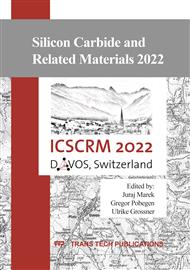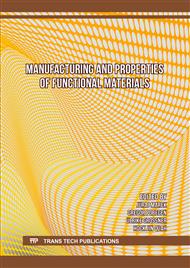p.3
p.9
p.15
p.23
p.29
p.35
p.41
p.47
Transfer of Heteroepitaxial Grown 3C-SiC Layers for Application in Optical Frequency Combs
Abstract:
We developed a process for the fabrication of SiCOI stacks which are a suitable platform for optical devices. Starting from 3C‑on‑Si samples the silicon substrate was removed by wet chemical etching and the remaining 3C‑SiC layers were bonded to two different low refractive substrates (Al2O3 and polycrystalline SiC with a 3 µm thick SiO2 layer on top deposited by PECVD). We found that also bonding onto Al2O3 was possible, the stability of the resulting stack wasn´t strong enough for further processing. In contrast mechanical stable SiCOI stacks could be realized using the oxide coated polycrystalline SiC as substrate. Besides the substrate materials three different bonding approaches (hydrophilic, hydrophobic and adhesive bonding using an HSQ resist) as well as multiple process parameters were analyzed with regard to the bonding performance. The best results could be achieved using the adhesive bonding approach with a bonding temperature ≥ 400°C, a process time ≥ 4 h and a bonding pressure of 96 N/cm2.
Info:
Periodical:
Pages:
3-8
Citation:
Online since:
June 2023
Authors:
Keywords:
Permissions:
Share:
Citation:



